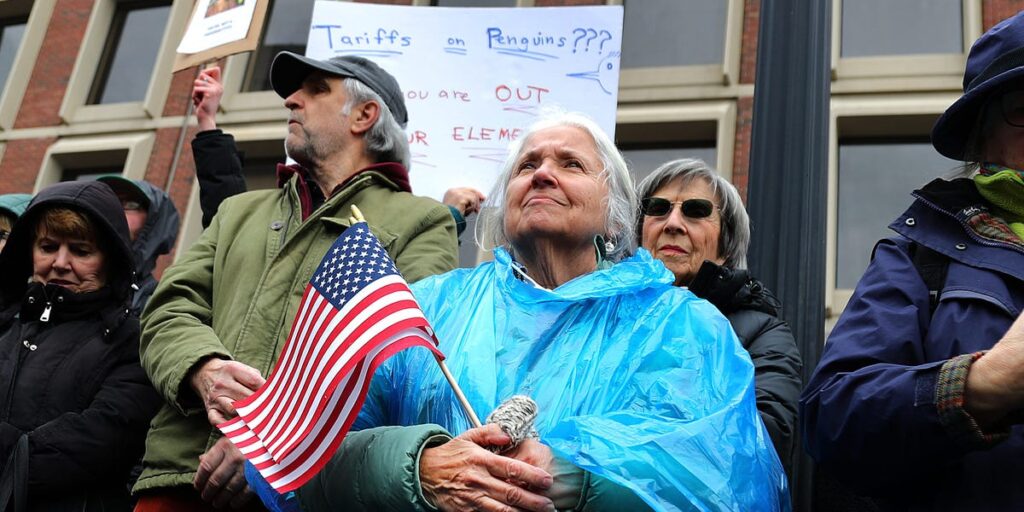I was browsing through photos of the recent anti-Trump and anti-DOGE protests across the US and couldn’t help but notice a significant presence of gray-haired individuals participating. This stood out to me compared to past protests, like those for Black Lives Matter and Israel/Gaza, where younger crowds seemed to dominate the scene.
I’m not alone in this observation. In the Reddit forum r/50501, which organized the weekend’s protests, someone mentioned, “We really got to hand it to the boomers,” noting that at protests in their area, the most visible signs of support came from older individuals.
A colleague of mine, Lakshmi Varanasi, recently highlighted a similar phenomenon during the “Tesla takedown” protests in Michigan, where the crowds were largely comprised of people over 65, many of whom were retired professionals from public service sectors.
Business Insider reporters also reported that many protesters expressed concerns about the economy and their retirement investments, which have been affected by recent events, including Trump’s tariff announcements.
In my own experience in the suburbs of New York City, I’ve noticed that protests recently have largely involved women over 60. While I think this is influenced by the area’s demographics, it’s certainly intriguing.
Several theories come to mind regarding the boomers’ notable participation in these protests. First, many baby boomers, currently aged 61 to 79, are nearing or at retirement age, leading them to be particularly concerned about Social Security and their retirement funds, both of which have faced significant challenges recently. Additionally, critics have expressed concern over how rising prices from new tariffs could impact their fixed incomes.
However, it’s important to remember that a 65-year-old who is disheartened by their investment account isn’t necessarily going to join an anti-Trump protest just because of financial distress. Boomers, like all generations, hold diverse political views, and not all of them share the same concerns.
Nonetheless, recent developments may have prompted some older Democrats, previously inactive during the Black Lives Matter and Gaza protests, to make their voices heard.
Robert Cohen, a professor at NYU who focuses on the history of protest movements, cautioned against broad generalizations about age demographics. He noted that boomers who participated in past protests might have a distinct perspective on the anti-Trump movement today, linking the slogan “Make America Great Again” to a desire to revert to a time before the social changes of the ’60s.
Historically, baby boomers have been pioneers of social causes such as civil rights and environmental protection, and they may feel compelled to defend these principles when they perceive them to be threatened. Moreover, individuals over 65 represent a reliable voting demographic, making them a force that politicians can’t easily ignore.
While it’s always tricky to make sweeping statements about generational trends, it’s clear that our image of protesters might need an update—from young activists with unconventional styles to older individuals showing up in their comfortable attire.


